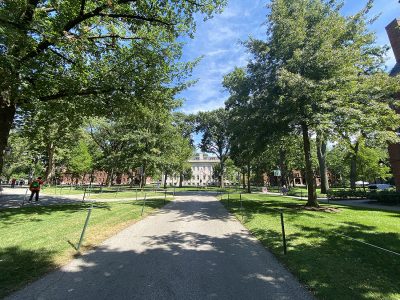Universities throughout Boston and the greater-Massachusetts area have worked to increase diversity for years, but students and education experts question the success of these inclusion efforts.

“When push comes to shove, there aren’t really that many truly diverse private institutions in our country,” said Joan Casey, president of Educational Advocates.
The first African American graduate from Harvard College was Richard Theodore Greener in 1870. Today, the current Harvard College freshman class is 14.7 percent African American, according to the college’s website.
Casey said she believes public universities have done a much better job than private universities at creating a diverse environment, in part because of the financial incentives that private institutions have.
“I think that Boston-area schools could look at the Boston Public High Schools and do a better job identifying talented students,” Casey said, “and giving them a decent enough financial aid package that they can attend.”
She added that creating a diverse environment can be measurably better for all students within a university due to the exposure of other cultures.
Despite this, initiatives such as affirmative action — policies designed to better minority and women applicants’ educational opportunities — have come under fire in recent years, Casey said.
The First Circuit U.S. Court of Appeals ruled that Harvard’s “limited” consideration of race in its application process did not violate the Constitution in November.
Ed Blum, president of Students for Fair Admissions, which filed the initial lawsuit alleging discrimination against Asian-American applicants, planned to appeal. Critics railed the suit as an attack on affirmative action.
At the end of the day, though, affirmative action is only a “drop in the bucket” during the college process, Casey said.
Casey added that other examples of preferential treatment such as “legacy” admissions, which tend to be more common among white applicants, have a more significant effect than affirmative action.
From 2014-2019, 43 percent of white Harvard admits had some sort of admissions preference — including legacy students, athletic recruits and children of faculty, according to a study by the National Bureau of Economic Research. Among Black, Asian American and Hispanic applicants, that figure was less than 16 percent each.
Casey said she hoped that admissions would improve in the future, but admitting a more diverse student body was only one piece of the puzzle.
“It’s great to admit students of color,” Casey said, “but if you don’t have any support and programming for them once they get there, it’s not going to go well.”
A number of universities throughout Boston and the greater-Massachusetts areas have established offices to combat racism and improve diversity, but Casey said she questioned whether some of these were merely “ornamental.”
Emerson College created the role of Director of Faculty Development and Diversity in 2019, hiring Tuesda Roberts and tasking her with increasing diversity and inclusivity among the school’s faculty.
Nia Cooper, a Black freshman at Emerson studying writing, literature, and publishing, said when she arrived on campus in the fall, she felt welcomed by the school and orientation leaders who clapped and cheered her name.
Cooper added that Emerson offered an orientation specifically for students of color.
“I think they’re doing their very best to make people of color feel more included,” Cooper said. “But I also do think that when there are issues like that, it’s usually mainly the student body who’s doing something about it.”
In addition to resources provided by universities themselves, many schools have student-run groups designed to provide a comfortable space for students of color.
Emerson’s Black Organization with Natural Interest is a student-run group that hosts multiple events each year and has more than 500 likes on its Facebook page.
Still, Cooper said she feels Emerson is primarily white.
“I know there are many people of color here, but I just haven’t met most of them I guess,” Cooper added.
The Emerson student population is four percent African American, according to Emerson’s website.
Madeline Cohen, a sophomore studying public health at the University of Massachusetts Amherst, said she does not think her college is diverse. Amherst’s 2018 undergraduate population is 71 percent white.
Cohen attended Boston Latin Academy, a diverse public exam school in Roxbury.
She said she was caught off guard when she arrived at Amherst.
“Some of my peers from suburban places were like, “Wow this is so diverse,’ and I was like, ‘Huh?’” Cohen said. “I came from a place that was literally the most diverse situation I’ve ever got myself in in my life.”
Cohen said most of her classes at Amherst are dominated by cisgender white students, but she hopes the school is becoming more diverse over time.
“How are we supposed to understand other people if we live in a bubble of people that are only like ourselves?” Cohen said.





















































































































